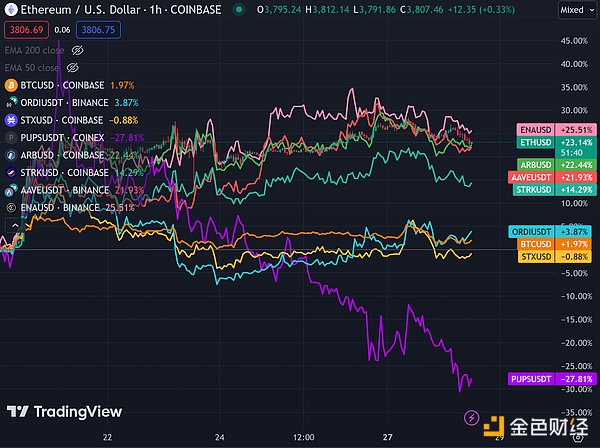Author: Jack Inabinet, Bankless; Translator: Deng Tong, Golden Finance
Bitcoin’s dilemma. Earlier last week, many crypto assets soared in price following Ethereum’s spot ETF approval and regulatory clarity on its status as a non-security, but the development has left the Bitcoin ecosystem without momentum. What’s going on?
While BTC managed to eke out gains amid the then-rumored odds of Ethereum ETF approval,last week was the worst period for BTC dominance since January’s spot Bitcoin ETF approval led to massive redemptions from the Grayscale Bitcoin Trust (GBTC).
The Ethereum ETF approval highlights that any crypto asset — regardless of its origins — could potentially be a non-security.
The Ethereum ETF approval highlights that any crypto asset — regardless of its origins — could potentially be a non-security.

BTC is not the only regulatory legality commodity that has not only dragged down BTC, but also severely affected the performance of numerous related ecosystem tokens.
While Bitcoin remains the oldest blockchain in existence, its non-security status is no longer a meaningful differentiator when considering cryptocurrency investment alternatives, and forces the ecosystem to compete more on its technological advantages.
Unfortunately, Bitcoin’s historical resistance to technological change in pursuit of ultra-hard currency has resulted in a degraded user experience and forced developers to adopt workarounds to deploy applications, causing the network to score low in this category…
Assets created using Bitcoin-native standards such as Ordinals, BRC-20, and Runes have previously received significant interest from investors seeking enhanced BTC upside, but are painful to interact with and offer no value beyond speculation.
Developers have attempted to inject enhanced utility into the Bitcoin network through Layer 2, however, existing solutions are merely sidechains and do not inherit any of the security of the base layer consensus.
Recognizing that BTC is not the only asset with regulatory clarity and access to TradFi, market participants appear to be gradually exiting BTC-related tokens.
While these tokens have seen huge gains at times, the loss of a unique regulatory narrative should result in these investments trading in line with their fundamentals and at valuations comparable to other on-chain applications.

 Weatherly
Weatherly




